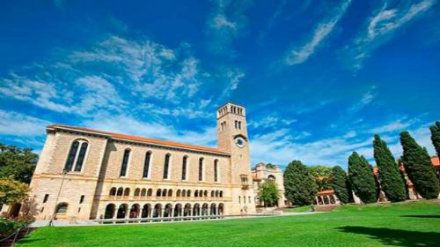If you’re planning to study in Australia, you may well have your sights set on one of the two highest-ranking universities in Australia: Australian National University (ANU) and the University of Melbourne.
Placed at 25th and 33rd in the QS World University Rankings® 2014/15, both are clearly among the world’s very best universities, making the choice between the two leading universities in Australia a pretty tough decision.
Below is an overview of various factors to consider when choosing where to study in Australia, including subject strengths, tuition fees, location and student population, followed by a more in-depth comparison of the top two universities in Australia in each category.
QS World University Rankings® 2014/15
Ranking well within the top 50 of the QS World University Rankings, both Australian National University and the University of Melbourne are established members of the world’s higher education elite. They both score extremely well on QS’s global academic reputation survey – and indeed on all the indicators used to compile the rankings.
The University of Melbourne takes a slight lead in the academic reputation indicator, for which it ranks 20thin the world, while Australian National University is close behind in 25th. Melbourne also comes out ahead for employer reputation, ranking 13th in the world, while ANU is a little further behind, in 47thplace.
ANU has the higher rank for faculty/student ratio: 147th, compared to Melbourne’s 341st. This indicator aims to give an insight into the level of support students may be able to expect, given the number of full-time faculty members employed per student. Meanwhile the University of Melbourne claims a slightly stronger score for citations per faculty member, which aims to assess research impact; it’s ranked 74th on this measure, while ANU stands at 129th.
For international diversity, both are again strong performers – unsurprising in light of Australia’s long history of welcoming students and academics from overseas. Both are within the global top 50 for their percentage of international students: Melbourne 44th and ANU 50th. For international faculty members, ANU is even stronger – ranked 33rd in the world to Melbourne’s 167th.
In short, it’s a close race all round; while the University of Melbourne claims a stronger score in four of the six measures used to compile the rankings, ANU’s lead in the remaining two (faculty/student ratio and research citations) is larger.
| QS World University Rankings® 2014/15 |
25th in the world; 1st in Australia 25th in the world for academic reputation 47th for employer reputation 147th for faculty/student ratio 129th for citations per faculty 33rd for international faculty ratio 50th for international student ratio
|
33rd in the world; 2nd in Australia 20th in the world for academic reputation 13th for employer reputation 341st for faculty/student ratio 74th for citations per faculty 167th for international faculty ratio 44th for international student ratio
|
| Subject strengths* |
10= in the world for arts & humanities 93rd for life sciences & medicine 29= for natural sciences 49= for engineering & technology 13th for social sciences & management
|
24th in the world for arts & humanities 17th for life sciences & medicine 39th for natural sciences 23rd for engineering & technology 18th for social sciences & management
|
| Academic reputation* | Slightly better-reputed than Melbourne in the fields of arts & humanities, natural sciences, and social sciences | Stronger reputation for life sciences & medicine, and engineering & technology |
| Location |
Canberra, Australia’s governmental capital Smaller and generally considered calmer Inland, surrounded by mountains, hills and bush
|
Melbourne, Australia’s ‘cultural capital’ Larger and generally considered to have a lot more going on On the south coast of Australia, on Port Philip bay
|
| Student community |
20,248 students in total 10,359 undergraduates 9,674 postgraduates Around a quarter of students are international (2012 figures)
|
38,281 students in total 22,524 undergraduates 15,718 postgraduates Almost 28% of students are international (2012 figures)
|
| Fees and funding |
Annual undergraduate fees for domestic students range from A$6,152 to $10,266 (US$5,400-$9,040) – 2015 figures. Annual international undergraduate fees range from A$25,984 to $30,111 (US$22,900-$26,500) and up to A$62,551 (US$55,100) for medicine. Annual international graduate student fees range from A$25,984 to $33,181 (US$22,900-$29,300).
|
Annual undergraduate fees for domestic students range from A$6,152 to $10,266 (US$5,400-$9,040) – 2015 figures. Annual international undergraduate fees range from A$24,960 to $36,224 (US$22,000-$31,900) and up to A$71,488 (US$63,000) for medicine. Annual international graduate student fees range from A$28,800 to $36,224 (US$25,400-$32,000).
|
*Based on the QS World University Rankings by Faculty (2014/15)
Subject strengths
The latest edition of the QS World University Rankings by Faculty (based on global surveys of academics and employers, as well as research citations data) indicates that ANU is slightly stronger in arts and humanities, natural sciences and social sciences, while Melbourne comes out ahead for life sciences and engineering and technology subjects.
For more specific insights, the QS World University Rankings by Subject highlights each university’s performance in 30 individual subject areas. These rankings further highlight the strong international standing of the top universities in Australia across a broad spectrum of disciplines; in most cases, both ANU and the University of Melbourne feature among the world’s top 50.
Especially strong areas for Australian National University include politics (7th in the world), linguistics (11th), geography (11th), Earth & marine sciences (12th), environmental sciences (12=), philosophy (13th), modern languages (14=), sociology (14=), law (15th) and history (15th). Meanwhile Melbourne’s strongest positions come in education (2nd in the world), accounting (8th), law (8th), psychology (10=), medicine (12th), linguistics (12th), environmental sciences (12=) and computer science (15th).
推荐阅读:
想了解更多澳大利亚或其他国家留学资讯,请访问出国留学网www.liuxue86.com



